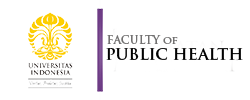Analisis Faktor-Faktor Kerentanan K3 yang Berhubungan Terhadap Keselamatan di Tempat Kerja Pada PT X Semasa Pandemi COVID-19
Abstract
Keywords
References
Al-Bsheish, M., Jarrar, M. and Scarbrough, A. (2021) ‘A Public Safety Compliance Model of Safety Behaviors in the Age of the COVID-19 Pandemic’, Inquiry (United States), 58. doi: 10.1177/00469580211031382.
Andersson, R. and Menckel, E. (1995) ‘On the prevention of accidents and injuries. A comparative analysis of conceptual frameworks’, Accident Analysis and Prevention, 27(6), pp. 757–68. doi: 10.1016/0001-4575(95)00031-3.
Beus, J. M., McCord, M. A. and Zohar, D. (2016) ‘Workplace safety: A review and research synthesis’, Organizational Psychology Review, 6(4), pp. 352–381. doi: 10.1177/2041386615626243.
Burke, M. J. et al. (2011) ‘The Dread Factor: How Hazards and Safety Training Influence Learning and Performance’, Journal of Applied Psychology, 96(1), pp. 46–70. doi: 10.1037/a0021838.
Çakıt, E. et al. (2020) ‘Assessing safety at work using an adaptive neuro-fuzzy inference system (ANFIS) approach aided by partial least squares structural equation modeling (PLS-SEM)’, International Journal of Industrial Ergonomics, 76(December 2019), p. 102925. doi: 10.1016/j.ergon.2020.102925.
Christian, M. S. et al. (2009) ‘Workplace Safety: A Meta-Analysis of the Roles of Person and Situation Factors’, Journal of Applied Psychology, 94(5), pp. 1103–1127. doi: 10.1037/a0016172.
Clarke, S. (2006) ‘The relationship between safety climate and safety performance: A meta-analytic review.’, Journal of Occupational Health Psychology, 11(4), pp. 315–327. doi: https://doi.org/10.1037/1076-8998.11.4.315.
Curtis, P. and Reddy, K. J. (2020) ‘COVID-19: A Study on Organisational Behavioural Safety Relevence on COVID Care’.
Griffin, M. A. and Neal, A. (2000) ‘Perceptions of safety at work: A framework for linking safety climate to safety performance, knowledge, and motivation’, Journal of Occupational Health Psychology, (5), pp. 347–358. doi: doi:10.1037/1076- 8998.5.3.347.
Guzman, J. et al. (2022) ‘Evaluating workplace safety in the oil and gas industry during the COVID-19 pandemic using occupational health and safety Vulnerability Measure and partial least square Structural Equation Modelling’, Cleaner Engineering and Technology, 6, p. 100378. doi: 10.1016/j.clet.2021.100378.
Hair, J. . et al. (2014) ‘Partial least squares structural equation modeling (PLS-SEM): An emerging tool in business research’, European Business Review, 26(2), pp. 106–121. doi: https;//doi.org/10.1108/EBR-10-2013-0128.
Hastono, S. P. (2006) Analisa Data Bidang Kesehatan.
Health and Safety Executive (2021) Manufacturing statistics in Great Britain, 2020. Available at: https://www.hse.gov.uk/statistics/industry/manufacturing.pdf.
Institute for Work & Health (2016) OHS Vulnerability Measure. Available at: https://www.iwh.on.ca/tools-and-guides/ohs-vulnerability-measure (Accessed: 25 February 2022).
Karpowicz, J. et al. (2021) ‘Characteristics of COVID-19 Workplace Clusters in Rhode Island.’, Rhode Island medical journal (2013), 104(10), pp. 42–45. Available at: http://www.ncbi.nlm.nih.gov/pubmed/34846382.
Keyserling, W. M. and Smith, G. S. (2007) ‘Using process control concepts to model conditions required for sudden-onset occupational injuries’, Journal Occupational Environmental Hygiene, 4(7), pp. 467–75. doi: 10.1080/15459620701386269.
Kniffin, K. M. et al. (2021) ‘COVID-19 and the workplace: Implications, issues, and insights for future research and action’, Am Psychol, 76(1), pp. 63–77. doi: 10.1037/amp0000716.
Konijn, A. M. et al. (2018) ‘The effect of active and passive occupational health and safety (OHS) training on OHS awareness and empowerment to participate in injury prevention among workers in Ontario and British Columbia (Canada)’, Safety Science, 108(October), pp. 286–291. doi: 10.1016/j.ssci.2017.12.026.
Laflamme, L. (1990) ‘A better understanding of occupational accident genesis to improve safety in the workplace’, Journal Occupational Accident, 12(1–3), pp. 155–165.
Murti, M. et al. (2021) ‘COVID-19 Workplace Outbreaks by Industry Sector and Their Associated Household Transmission, Ontario, Canada, January to June, 2020’, Journal of Occupational and Environmental Medicine, 63(7), pp. 574–580. doi: 10.1097/JOM.0000000000002201.
Neal, A., Griffin, M. A. and Hart, P. . (2000) ‘The impact of organizational climate on safety climate and individual behavior’, Safety Science, 34(1–3), pp. 99–109. Available at: https://doi.org/10.1016/S0925-7535(00)00008-4.
Sigahi, T. F. A. C. et al. (2021) ‘A systematic review on the impacts of Covid‐19 on work: Contributions and a path forward from the perspectives of ergonomics and psychodynamics of work’, Human Factors and Ergonomic in Manufacturing. doi: https://doi.org/10.1002/hfm.20889.
Siregar, S. (2013) Metode Penelitian Kuantitatif: Dilengkapi Dengan Perbandingan Perhitungan Manual dan SPSS. 2nd edn. Edited by Kencana. Jakarta: PT. Fajar Interperatama Mandiri.
Smith, P., Saunders, R. and Lamontagne, A. (2013) Developing a Framework for Understanding and Measuring Occupational Health & Safety Vulnerability.
Sugiono (2009) Metodologi Penelitian Kualitatif dan R&D. Bandung: Alfabeta.
Wallace, J. . et al. (2012) ‘Occupational Safety’, The Oxford handbook of personnel assessment and selection. Oxford University Press.
Weil, D. (2009) Regulating Vulnerable Work : A Sector-Based Approach, ILO. Boston University. Available at: http://ilo.org/legacy/english/protection/travail/pdf/rdwpaper43b.pdf.
World Health Organization (2017) Occupational Health. Available at: https://www.who.int/health-topics/occupational-health (Accessed: 1 April 2022).
Yanar, B., Kosny, A. and Smith, P. M. (2018) ‘Occupational health and safety vulnerability of recent immigrants and refugees’, International Journal of Environmental Research and Public Health, 15(9). doi: 10.3390/ijerph15092004.
Zohar, D. (1980) ‘Safety climate in industrial organizations: Theoretical and applied implications’, Journal of Applied Psychology, 65(1), pp. 96–102. doi: 10.1037/0021-9010.65.1.96.
DOI: 10.59230/njohs.v4i1.7091
Refbacks
- There are currently no refbacks.







.png)
